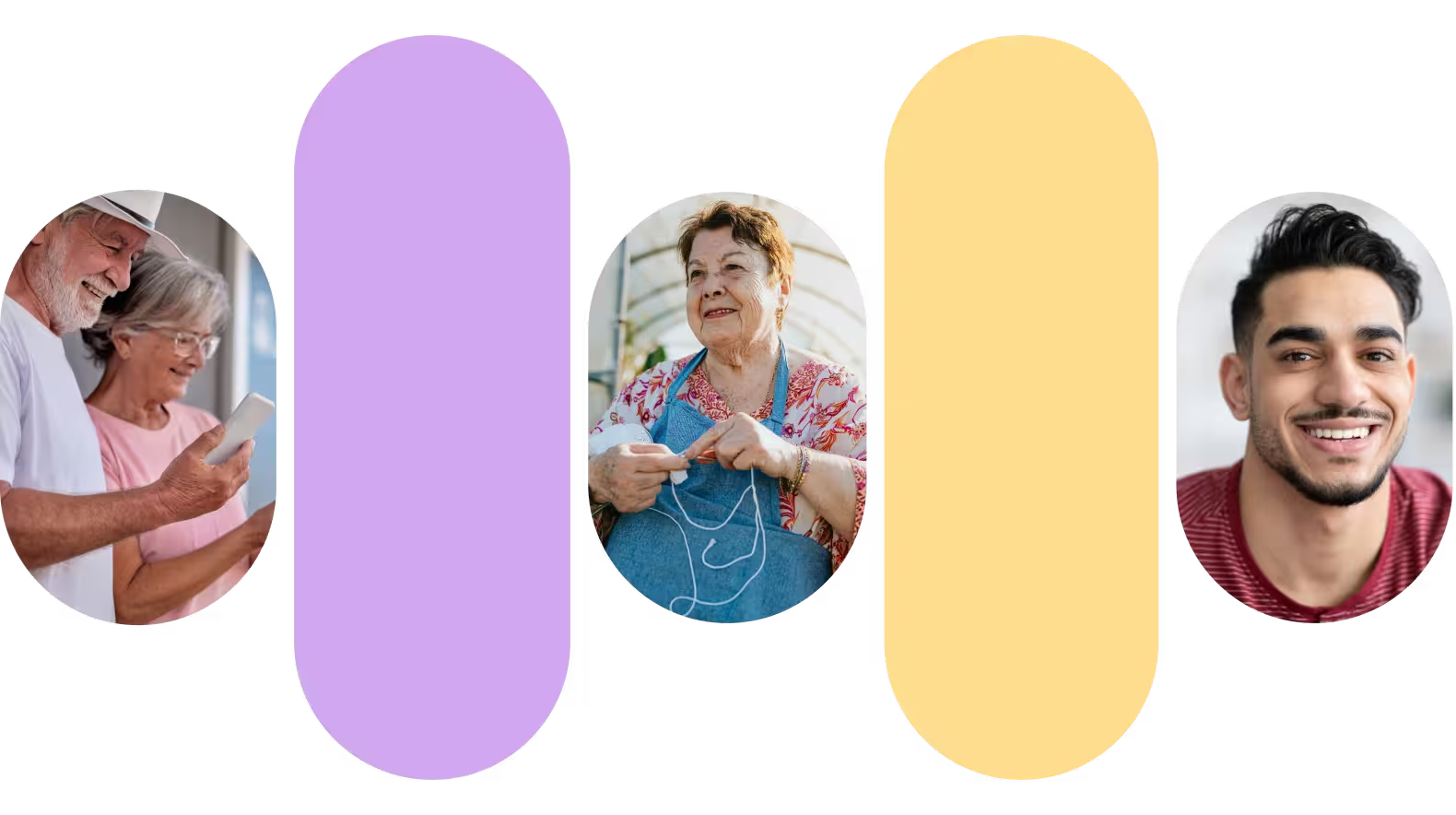The Power of Self-Advocacy for Deaf People: Breaking Down Barriers
Advocating for yourself means asserting your rights, educating others, promoting inclusion, and ensuring your voice is heard! Read more!

Learn how to advocate for yourself, communicate with confidence, and use tools like Nagish to ensure your voice is heard.
For people who are deaf or hard of hearing, everyday life can come with significant challenges—barriers to communication, inaccessible environments, and persistent discrimination. But there’s one thing that can help turn obstacles into opportunities: self-advocacy.
Advocating for yourself isn’t just about asserting your rights—it’s about educating others, promoting inclusion, and making sure your voice is heard, loud and clear.
Today, technology plays a powerful role in leveling the playing field. Nagish, a modern communication app, gives deaf and hard-of-hearing individuals the ability to engage in phone conversations via real-time captions or text-to-speech. With tools like this, you can communicate on your terms—anytime, anywhere.
In this article, we’ll explore how self-advocacy empowers the deaf community and how tools like Nagish can help you navigate daily life with greater independence, confidence, and control.
Understanding the Barriers
Self-advocacy starts with awareness. That’s why it's important to recognize the structural and societal barriers that persist.
Communication Barriers
Many essential conversations in the health care, professional, or educational space still rely heavily on spoken communication, often with no interpreter or captioning.
Nagish bridges this gap by turning phone calls or live conversations into accessible conversations through real-time captioning, live transcribe features, and voice-to-text technology.
Lack of Accessibility
Many digital and physical spaces are not built with deaf users in mind. Videos often lack captions, apps don't offer transcripts, and public alert systems still rely on sound alone.
While policies are evolving, personal tools like Nagish empower you to move through inaccessible systems independently.
Discrimination and Misunderstanding
Deaf individuals often face discrimination due to widespread misconceptions about their abilities. Self-advocacy, backed by clear communication tools, helps challenge assumptions and educate others.
Effective communication strategies for self-advocacy
There’s no one-size-fits-all solution. What matters most is finding strategies that work for you in different situations. Some helpful communication approaches include:
- Using Nagish to caption phone calls in real-time or speak through typed messages
- Requesting sign language interpreters or CART (Communication Access Realtime Translation) services
- Utilizing hearing aids, cochlear implants, or other assistive technologies
- Writing down your thoughts via notes or emails when needed
- Educating others about deaf culture and your communication preferences
- Ensuring environments are well-lit to allow for facial cues and lip reading
- Asking healthcare providers to speak clearly, use plain English, and offer printed materials
Creating Accessible Environments
Self-advocacy is also about creating more inclusive spaces for everyone. Here are ways to help drive change:
- Promote awareness and encourage public adoption of tools like Nagish
- Ensure buildings have both audible and visual fire alarms
- Advocate for captions and transcripts in all online videos and multimedia content
- Ask employers to provide captioning tools, interpreters, and access to email/chat during meetings
- Push for accessible transit systems with visual announcements and real-time alerts
- Encourage schools and workplaces to offer deaf awareness training for staff and teachers
- Request written copies of public information and event materials
When more people recognize and implement inclusive practices, accessibility becomes the norm, not the exception.
Know your rights

Understanding your legal rights is a core part of self-advocacy. Here are some key laws that protect access and equality for deaf and hard-of-hearing individuals:
- The Americans with Disabilities Act (ADA)
- The Rehabilitation Act of 1973
- Individuals with Disabilities Education Act (IDEA)
Beyond the law, self-advocacy is also about showing up and asking for what you need. Each time you do, you educate others and lead by example.
Find mentors and role models in the deaf community. Their stories and experiences can provide guidance and encouragement as you build your own advocacy journey.
Building self-empowerment
True empowerment comes from knowing your needs and expressing them with confidence. Here’s how to strengthen your advocacy skills:
- Understand your communication style—know what works best for you
- Use assistive tools like Nagish to make daily conversations more accessible
- Create a strong support network of friends, family, and professionals
- Join advocacy and peer groups to connect with others in the community
- Celebrate your strengths and reflect on opportunities for growth
- Practice self-care to stay mentally and emotionally resilient
Self-advocacy is a skill—and like any skill, it grows stronger with practice.
Resources and Support

Making sense of systems, networks, and assistive technologies can be challenging, but there are plenty of resources available.
Here’s a starter list of resources to guide you:
- Vocational Rehabilitation Services. VR offers different services, but the main service is helping you get and retain full-time employment.
- Disability Rights Organizations. The ADA National Network consists of 10 regional centers throughout the U.S.
- Deaf and Hard of Hearing Services Centers. Find your local deaf and hard of hearing services by doing a web search.
- Assistive Technology Centers. Conduct a search for your local area. All U.S. states provide assistive technology for people with disabilities.
Conclusion
Self-advocacy is not just about standing up for yourself, it’s about making the world more inclusive for everyone. And it begins with using every tool at your disposal.













